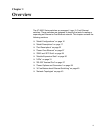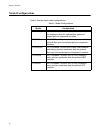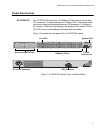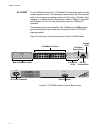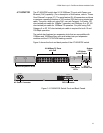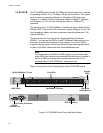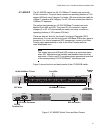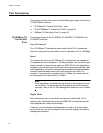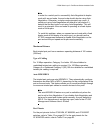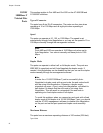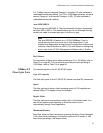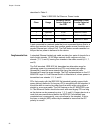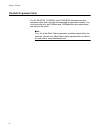
AT-8500 Series Layer 2+ Fast Ethernet Switches Installation Guide
23
Note
In order for a switch port to successfully Auto-Negotiate its duplex
mode with an end node, the end node should also be using Auto-
Negotiation. Otherwise, a duplex mode mismatch can occur. A
switch port using Auto-Negotiation will default to half-duplex if it
detects that the end node is not using Auto-Negotiation. This will
result in a mismatch if the end node is operating at a fixed duplex
mode of full-duplex.
To avoid this problem, when you connect an end node with a fixed
duplex mode of full-duplex to a switch port, you should use the
AT-S62 management software to disable Auto-Negotiation on the
port and set the port speed and duplex mode manually.
Maximum Distance
Each twisted pair port has a maximum operating distance of 100 meters
(328 feet).
Type of Cabling
For 10 Mbps operation, Category 3 or better 100 ohm shielded or
unshielded twisted pair cabling is required. For 100 Mbps operation,
Category 5 or Enhanced Category 5 (5E) 100 ohm shielded or unshielded
twisted pair cabling is required.
Auto-MDI/MDI-X
The twisted pair ports are auto-MDI/MDI-X. They automatically configure
themselves as either MDI or MDI-X, depending on the configuration of the
port on the end node. This feature allows you to use either straight-through
or crossover twisted pair cables to connect devices to the ports.
Note
The auto-MDI/MDI-X feature on a port is available only when the
port is set to Auto-Negotiation. If you disable Auto-Negotiation and
set a port’s speed and duplex mode manually, the port defaults to
MDI-X. For instructions on configuring a port, refer to the AT-S62
Management Software User’s Guides.
Port Pinouts
For the port pinouts for the AT-8524M, AT-8550GB, and AT-8550SP
switches, refer to Table 12 on page 83. For the port pinouts for the
AT-8524POE switch, refer to Table 13 on page 83.



